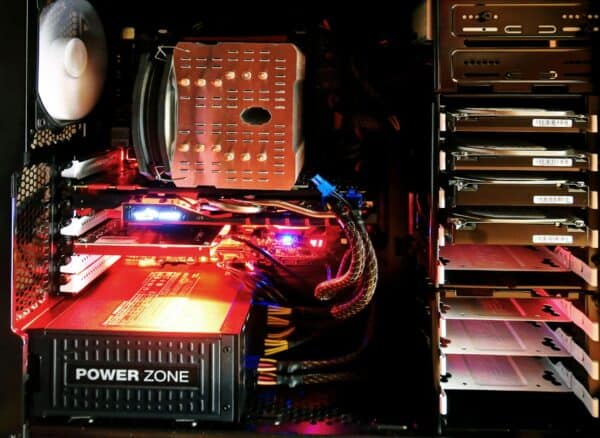
The processing capacity needed for artificial intelligence (AI) tasks is substantial, and GPUs are now the mainstay of AI training and inference. Many enthusiasts and developers investigate gaming GPUs for AI workloads, even though data centers and researchers frequently rely on specialist hardware like the NVIDIA A100 or H100. Among the most potent consumer graphics processing units available are the AMD Radeon RX 7900 and the NVIDIA RTX 4090. However, do they perform well in AI inference? Let’s examine what constitutes an AI-friendly GPU and if gaming GPUs can handle AI tasks.
GPU – What makes it AI friendly?
VRAM Capacity and Bandwidth: In order to effectively process complicated computations, AI models need a large VRAM and a high memory bandwidth. The Radeon RX 7900 has 20GB of GDDR6 VRAM, but the RTX 4090 has 24GB of GDDR6X VRAM. Larger models can run without memory bottlenecks when there is more VRAM.
Tensor Cores and CUDA Cores: NVIDIA’s GPUs have Tensor Cores to speed up AI matrix computations and CUDA Cores for general parallel processing. The RTX 4090 is a good choice for AI applications since its Tensor Cores greatly increase the speed of AI inference.
Precision Support for FP16 and INT8: GPU for inference gains from lower precision computations such as FP16 and INT8, which increase productivity without sacrificing accuracy. While AMD’s RDNA3-based Radeon RX 7900 features AI acceleration but no specialized Tensor Cores, the RTX 4090’s Tensor Cores are tuned for these tasks.
Software Ecosystem: NVIDIA GPUs are more appealing for AI workloads due to the robust AI support provided by the CUDA and cuDNN libraries. Although AMD’s ROCm ecosystem is getting better, it still cannot accommodate as many AI frameworks as NVIDIA.
Gaming GPUs – Can they handle AI Workloads?
Indeed, gaming GPUs are capable of handling AI tasks; however, the task and software compatibility determine how well they perform. The RTX 4090 and Radeon RX 7900 perform as follows:
For AI Inference, RTX 4090
Advantages:
- Large AI models are supported with 24GB VRAM.
- Tensor Cores speed up inference in deep learning
- Robust support for AI frameworks such as PyTorch and TensorFlow
- FP16 and INT8 operation optimization
Disadvantages:
- Excessive power usage (450W TDP)
- Pricey for a GPU used for gaming
Using Radeon RX 7900 for AI Inference
Advantages:
- A good amount of VRAM for AI workloads is 20GB.
- Less expensive as the RTX 4090
- Using ROCm to increase support for AI
- Has the ability of tackling moderate AI tasks
Disadvantages:
- Absence of specific Tensor Cores
- Support for AI software is less optimized than that of NVIDIA
- Adoption of ROCm is booming but is still lagging behind CUDA
Is a Gaming GPU Advisable for Inference?
Although they are not as tuned as specialized AI accelerators like the A100, gaming GPUs like the RTX 4090 and Radeon RX 7900 can be used for AI workloads. Because of its powerful AI capabilities, the RTX 4090 is a good option for researchers, developers, or AI enthusiasts on a tight budget. However, purchasing specialist hardware can be a preferable choice for professional AI tasks that demand the highest level of efficiency and scalability.
Gaming GPUs might provide a good balance between price and performance if you’re searching for a GPU for inference, but NVIDIA’s software ecosystem and Tensor Core advantages keep it as the industry leader. Although AMD’s Radeon RX 7900 is making progress, it does not yet fully enable optimizations tailored to artificial intelligence. Ultimately, your workload, financial constraints, and software needs will determine which GPU is best for you.
 Gearfuse Technology, Science, Culture & More
Gearfuse Technology, Science, Culture & More


